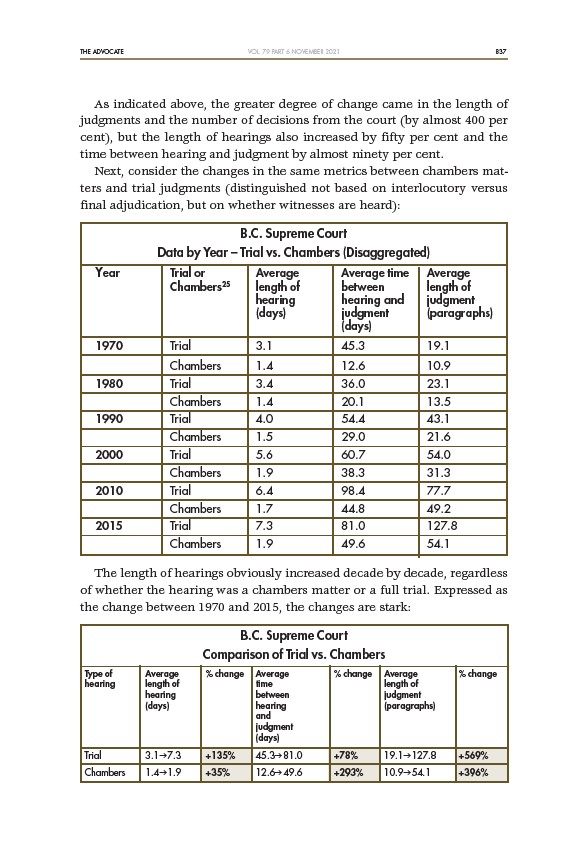
THE ADVOCATE 837
VOL. 79 PART 6 NOVEMBER 2021
As indicated above, the greater degree of change came in the length of
judgments and the number of decisions from the court (by almost 400 per
cent), but the length of hearings also increased by fifty per cent and the
time between hearing and judgment by almost ninety per cent.
Next, consider the changes in the same metrics between chambers matters
and trial judgments (distinguished not based on interlocutory versus
final adjudication, but on whether witnesses are heard):
B.C. Supreme Court
Data by Year – Trial vs. Chambers (Disaggregated)
Year Trial or Average Average time Average
Chambers25 length of between length of
hearing hearing and judgment
(days) judgment (paragraphs)
(days)
1970 Trial 3.1 45.3 19.1
Chambers 1.4 12.6 10.9
1980 Trial 3.4 36.0 23.1
Chambers 1.4 20.1 13.5
1990 Trial 4.0 54.4 43.1
Chambers 1.5 29.0 21.6
2000 Trial 5.6 60.7 54.0
Chambers 1.9 38.3 31.3
2010 Trial 6.4 98.4 77.7
Chambers 1.7 44.8 49.2
2015 Trial 7.3 81.0 127.8
Chambers 1.9 49.6 54.1
The length of hearings obviously increased decade by decade, regardless
of whether the hearing was a chambers matter or a full trial. Expressed as
the change between 1970 and 2015, the changes are stark:
B.C. Supreme Court
Comparison of Trial vs. Chambers
Type of Average % change Average % change Average % change
hearing length of time length of
hearing between judgment
(days) hearing (paragraphs)
and
judgment
(days)
Trial 3.1g7.3 +135% 45.3g81.0 +78% 19.1g127.8 +569%
Chambers 1.4g1.9 +35% 12.6g49.6 +293% 10.9g54.1 +396%